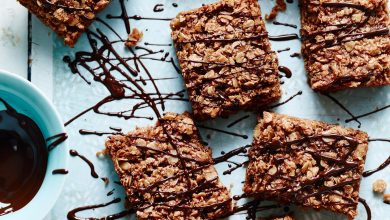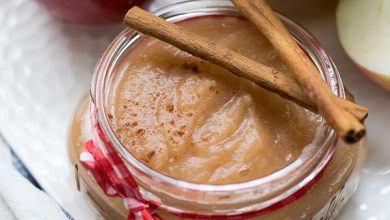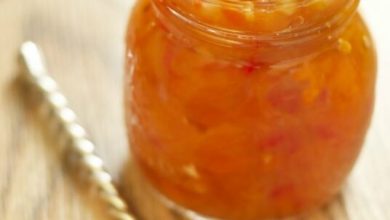🌿🍝 Sure thing! Let’s dive into the world of Amy’s Pesto! 🌿🍝
What is Amy’s Pesto?
Amy’s Pesto is a delicious and versatile sauce that originates from Italian cuisine. It’s known for its vibrant green color and incredible flavor, making it a popular choice for pasta dishes, sandwiches, and as a dip for bread or vegetables.
History of Pesto:
Pesto has a rich history dating back to ancient Rome, but the modern version we know and love today, Pesto alla Genovese, hails from Genoa, Italy. The word “pesto” comes from the Italian word “pestare,” which means to pound or crush, referring to the traditional method of making pesto with a mortar and pestle.
Components of Amy’s Pesto:
- Fresh Basil Leaves: The star ingredient, basil, gives pesto its signature green color and aromatic flavor.
- Pine Nuts: These add a rich, nutty taste and contribute to the sauce’s creamy texture.
- Parmesan Cheese: Provides a salty and umami flavor to balance the herbs and nuts.
- Garlic: Adds a sharp, pungent kick to the sauce.
- Olive Oil: Used to blend and bind the ingredients together.
- Salt and Pepper: Seasoning to taste.
Steps to Prepare Amy’s Pesto:
Here’s a step-by-step guide to making Amy’s Pesto:
-
Gather your ingredients: You’ll need fresh basil leaves, pine nuts, grated Parmesan cheese, garlic cloves, olive oil, salt, and pepper.
-
Toast the Pine Nuts: In a dry pan, lightly toast the pine nuts over low heat until they turn golden. This enhances their flavor. Be cautious not to burn them.
-
Combine Ingredients: Place the basil leaves, toasted pine nuts, grated Parmesan cheese, and garlic cloves in a food processor or blender.
-
Blend: Pulse the ingredients until they are roughly chopped.
-
Drizzle in Olive Oil: With the food processor running, slowly drizzle in the olive oil until the mixture becomes smooth and well combined. You can adjust the amount of olive oil to achieve your desired consistency.
-
Season: Add salt and pepper to taste. Remember that Parmesan cheese is salty, so be cautious with the salt.
-
Taste and Adjust: Give it a taste and adjust the ingredients if needed. You can add more garlic, cheese, or nuts to suit your preferences.
Time Needed to Prepare:
Preparing Amy’s Pesto typically takes around 15-20 minutes, including the time for gathering and toasting the ingredients. It’s a quick and easy sauce to make, perfect for busy weeknight dinners or when you want to impress guests with a homemade touch.
So there you have it, a delightful journey into the world of Amy’s Pesto! Enjoy experimenting with this flavorful sauce in your culinary adventures. 🌿🍝😊
Certainly! Here’s the nutrition information and some health considerations for Amy’s Pesto:
Nutrition Facts for Amy’s Pesto (1 serving, approximately 2 tablespoons):
- Calories: Approximately 130-150 calories
- Total Fat: Around 13-15 grams
- Saturated Fat: 2-3 grams
- Trans Fat: 0 grams
- Cholesterol: About 2-5 milligrams
- Sodium: Varies based on added salt but typically around 150-200 milligrams
- Total Carbohydrates: Around 1-2 grams
- Dietary Fiber: 0-1 gram
- Sugars: 0-1 gram
- Protein: Approximately 2-3 grams
Health Information:
- Rich in Healthy Fats: Amy’s Pesto is primarily made from olive oil and pine nuts, both of which contain heart-healthy monounsaturated fats.
- Source of Antioxidants: Basil, a key ingredient in pesto, is a rich source of antioxidants like flavonoids and polyphenols.
- Vitamins and Minerals: Pesto also provides essential nutrients such as vitamin K, vitamin A, vitamin C, and calcium from the basil and Parmesan cheese.
- Moderate Calories: While pesto is calorie-dense due to the fats, it can be part of a balanced diet when consumed in moderation.
- Portion Control: Keep in mind that a little goes a long way. You don’t need a lot of pesto to flavor a dish, so watch your portion size to control calorie intake.
- Sodium Consideration: Depending on how much salt you add, pesto can vary in sodium content. Consider using less salt or a low-sodium Parmesan cheese if you’re watching your sodium intake.
- Allergen Alert: Pesto contains nuts (pine nuts) and dairy (Parmesan cheese), so be cautious if you have allergies.
- Versatility: Pesto can be used in various dishes, but it’s often paired with pasta. Opt for whole-grain pasta for added fiber and nutrients.
- Balanced Meal: To make a balanced meal, pair pesto with a variety of vegetables and lean protein like grilled chicken or tofu.
Remember that the exact nutritional content can vary based on the specific ingredients and proportions used in your homemade pesto. It’s a flavorful and nutritious addition to your meals, but like all foods, it’s best enjoyed as part of a well-rounded diet.








